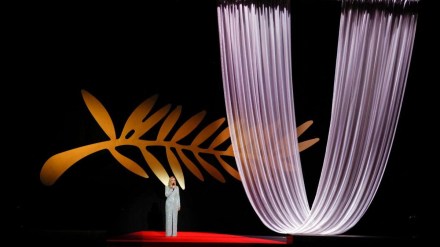The Indian contingent is back from the Palais des Festivals et des Congrès in Cannes with just 18 metals. The fall in the tally has been a steep 28% from last year’s 25, leading to the hard question: What will it take for Indian creativity to roar at the Cannes Lions? Considering that the Indian ad industry is booming — `93,166 crore in 2023 according to Dentsu India — and that India has been sending entries for well over three decades now, why is the industry still unable to figure out what works with international juries? Some agency hands say Indian agencies don’t have the money to play the Cannes game well; the ads were great but the entry documents were not reflective of their potential; and possibly winning awards at Cannes has no role to play in the agencies’ domestic business because what wins in Cannes is mostly ads created for the Cannes jury.
It is also being said, of course with some justification, that this year’s tally should not be scoffed at and even getting a place on the shortlists are creditable as only 10% of entries make the cut. But these arguments are like sour grapes. After all, when you play the World Cup finals, you play to win, not to get a feel of the competition. Take the last five years. India has averaged a 3%-plus conversion rate from entries to win. This year, India sent 826 entries, logged 57 shortlists, and struck one Grand Prix, two golds, seven silvers, and nine bronzes. The conversion rate from entries to win is 2.17%. Go back two years to 2022. India had 921 entries, 121 shortlists, 47 metals, and a conversion rate of 5.21%.
The point to remember from all the award winners is that it’s creativity that wins, not budget size. The world has evolved from billboards to augmented reality, but every time one sees a winner, there is a powerful idea packaged in a way that appeals to the current generation of consumers. For example, the Fevicol campaign will work even if it shows a cursor that gets stuck on a screen — it might irritate the consumer briefly but the residual memory of a powerful idea will still evoke a smile. Also, there’s no point in distinguishing between “creative” and “effective”. Take Leo Burnett’s ad for Gatorade, which won a gold in the creative data category and a bronze in the Entertainment Lions for Sport category this year. The campaign is a tech-based intervention in partnership with Google Maps to provide open playing spaces to people in crowded cities. The agency used Google Maps’ data to pinpoint the exact time when certain public spaces in New Delhi, Mumbai, and Bengaluru would be empty so that Gatorade could lay down a turf where people could play. That was a clever use of technology to solve a very locally relevant issue.
So the argument that an international jury fails to connect with local ideas and local stories just flies out of the window. The overall takeaway from Cannes is clear: Technology will continue to change the way we communicate and market products and services, what remains constant is the need for a disruptive idea that connects a brand to its consumers in an increasingly distracted world. Clear objectives, matched with proven results, plus great storytelling, equals an agency’s best shot at winning. There’s no escaping this.
